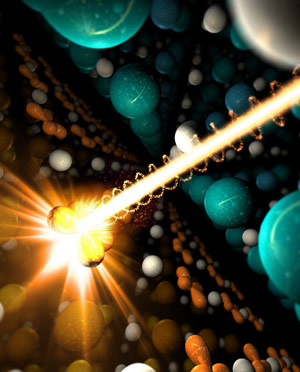
This image is an artist’s conception of a titanium atom in a man-made oxide heterostructure revealing magnetic properties to the probing X-ray beam of the Stanford Synchrotron Radiation Lightsource – even though under normal circumstances titanium is not magnetic at all. Greg Stewart/SLAC
In a newly published study, researchers from SLAC National Accelerator Laboratory proved that the magnetism in the LaAlO3/SrTiO3 heterostructure comes from the titanium atom.
Scientists from SLAC and Stanford have used finely tuned X-rays at the Stanford Synchrotron Radiation Lightsource (SSRL) to pin down the source of a mysterious magnetism that appears when two materials are sandwiched together.
Why is this mysterious?
Neither material shows a hint of magnetism on its own.
Both materials are perovskites, a class of mineral oxides whose unique electronic properties are of great interest to scientists. Perovskites already have a variety of industrial uses, and researchers are busy trying to find ways to transform some of them – such as the high-temperature superconductors – into materials that could transform our energy grid or help create environmentally friendly fuels.
These particular perovskites are known as LAO (lanthanum aluminum oxide) and STO (strontium titanium oxide), and both are insulators. But when sandwiched together, the resulting “heterostructure” can conduct electricity at the interface where the materials meet. In fact, when cooled to near-absolute zero this heterostructure becomes a superconductor, conducting electricity without any resistance. Even more puzzling, it displays magnetic qualities at the juncture where LAO and STO meet – something neither material does alone, even when doped with impurities to tune its properties.
Which particular atoms acquire this new property? That’s what the researchers wanted to learn, and the results of their study appeared this week in Nature Materials.
The researchers studied sample heterostructures, each one an extremely thin layer of LAO on an STO substrate. The samples were grown by the group of Harold Hwang of the Stanford Institute for Materials and Energy Sciences (SIMES), a joint SLAC-Stanford institute. Hwang is an expert in this heterostructure; he’s been studying it for a decade.
SSRL Staff Scientist Jun-Sik Lee said the group relied on one very important property of SSRL’s X-rays: They can be tuned to just the right wavelength to probe the properties of a specific element. In other words, the researchers could use the X-rays to look only at the titanium in the STO slice of the heterostructure, or only at oxygen.
Their investigation pointed to one culprit. “We’ve proved the magnetism comes from the titanium atom,” said Lee, though precisely what is causing this change in a fundamental property is unclear. What’s more, the magnetism arises in what’s called the “ground state” of the titanium atoms, when they are at their lowest energy. In fact, the researchers pursued magnetism in the titanium atoms all the way down to 10 kelvins, 10 degrees above absolute zero.
That’s intriguing, said Lee, because the structure of this magnetic ground state in the titanium of STO is the same structure required for it to be able to transition to a superconductor. This hints at the possibility the LAO/STO interface may exhibit another unconventional behavior: magnetism and superconductivity coexisting, a possibility that, said Lee, “is quite unusual in our conventional understanding of physics.” One of the identifying characteristics of a superconductor is the way it repels magnetic fields.
Unfortunately, the researchers weren’t able to study the magnetic titanium at temperatures low enough to cause the heterostructure to transition to superconductivity. However, their research does support the research of SIMES member Kathryn Moler, published in Nature Physics in 2011, in which her research team detected both superconductivity and magnetism existing at the LAO/STO interface.
Hwang noted that even after almost a decade of investigation by many groups worldwide, this seemingly simple interface continues to generate new surprises. “One of the dreams of our field is the notion of ‘materials by design,'” he said. “We hope that these studies of unexpected emergent phenomena, such as the magnetism here, can lead to an understanding by which we can predictably engineer the properties of artificial heterostructures.”
Chi-Chang Kao, director of SLAC and a co-author of this work, emphasized the close collaboration between the SLAC and Stanford members of the group. “The collaboration started from a series of meetings Harold organized to introduce his group’s research, and is a prime example of the kind of work suited to being tackled together, applying SLAC’s unique resources – such as SSRL – to the scientific problems of the SLAC and Stanford community,” he said. “There are many other examples, and I hope to foster even more of them going forward.”
As for next steps, Lee just laughed. “There are a lot of next steps,” he said. “We’ve passed on a very big question to everyone. We’ve said, ‘OK, we got this result – now we all have a lot of homework to do.'”
Reference: “Titanium dx y ferromagnetism at the LaAlO3/SrTiO3 interface” by J.-S. Lee, Y. W. Xie, H. K. Sato, C. Bell, Y. Hikita, H. Y. Hwang and C.-C. Kao, 2 June 2013, Nature Materials.
DOI: 10.1038/nmat3674

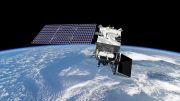
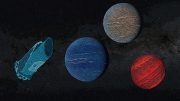
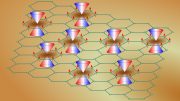
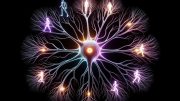

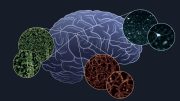

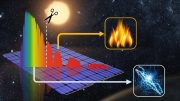
the military isn’t involved are they?
Don’t know, Raymond… Maybe? However, as I have stated many times before, I find it heartening that such research is moving forward aplomb however, there is still no credit being given towards the fact that it is all being driven along by my posits that, our entire universe is made of ‘Electromagnetic Energy’.
Isn’t it about time that a little bit of professionalism manifested itself within the various disciplines? The fact is, the dramatic upsurge in this particular Field of work only took place after I had deposited my theories on the creation of our universe with the British and U.S. academia. Organisation that it would appear are endowed with a ‘Moral Compass’ so out of alignment North is pointing, South at the moment.
Hello Peter O’ Connor! If you say that entire universe is made up of electromagnetism only you please rewrite the unified field theory. There are four basic forces of different character, viz., Electro magnetic, Electro weak, Strong forces of quarks, and gravitational force. In addition to this Higgs field is another one contributing mass. Electromagnetic and gravitational forces are long range forces with least interaction with Higg’s force whereas Strong forces are color forces and they are ultra short ranged mediated by Higgs force tremendously. So is our electro weak forces of W+, W- and Z Bosons. You have to shake this fundamental structure to make us accept only electro-magnetic force of Universe. Have you not come across mateors which are always magnetic in nature? They acquire magnetism in space by the above process only as stated in article. Thank You.